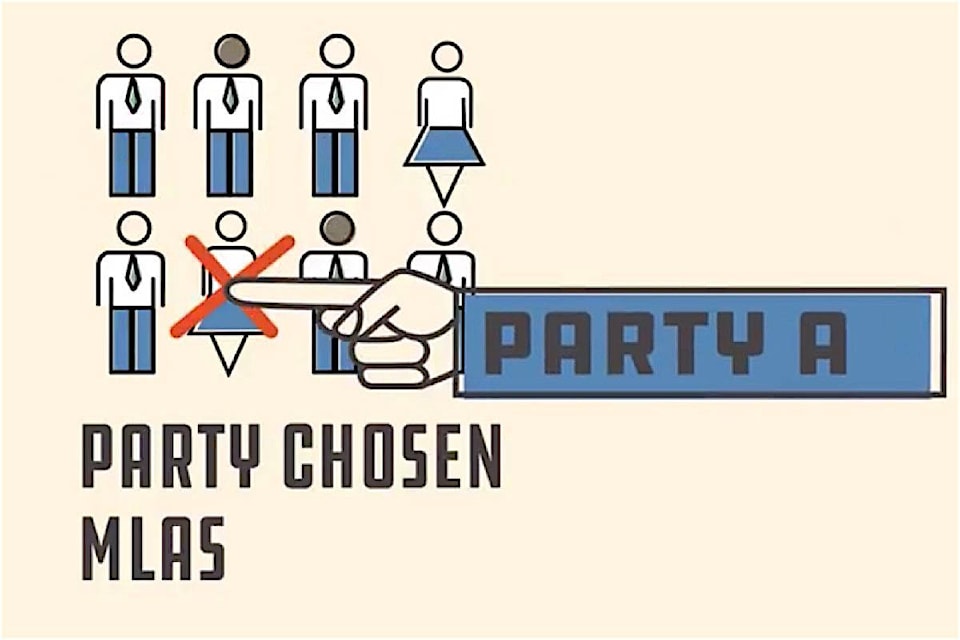In the coming weeks, British Columbians will decide whether they want a change to the structure of provincial elections.
The choice in the 2018 Referendum on Electoral Reform is whether to continue with the existing first past the post model or to switch to a proportional representation system.
Under the present system, voters choose the local candidate they prefer. The party that wins the most seats forms the government and has the power in the legislature.
Proponents of this system say the existing model works well and does not need to be replaced.
It’s an established system and it results in governments which reflect the wishes of the voters.
But a quick look at some of the recent B.C. election results should show there is a difference between the voters’ choices and the final results.
Consider the most recent provincial election in 2017.
This was one of the tightest elections in B.C. history, with the Liberals receiving 40.36 per cent of the popular vote while the New Democratic Party garnered 40.28 per cent of voter support.
The close race showed itself in the final results as the Liberals won 43 of the 87 seats while the New Democrats finished with 41 seats.
If the election had been a choice of two parties, the results would have been close to what the voters chose.
But the 2017 election was not limited to two choices. There were 18 political parties, as well as independent or unaffiliated candidates.
Some would argue that the results show one of the strengths of the first past the post system, namely weeding out the fringe parties.
Concerns have been raised that under a proportional representation system, extremist voices and fringe parties would have a greater presence than they deserve.
Or, as a friend of mine has described it, proportional representation is “an electoral system for those unable to build mass appeal for their ridiculous ideas.”
But if this is the case, then how does one explain the Green Party’s results?
The Green Party received with just three seats, despite having support of 16.84 per cent of those who cast ballots.
One in six British Columbia voters cast a vote for a Green candidate. This number is significant.
The Green Party received nearly seven times as many votes the combined total received by the Conservatives, Libertarians, the Christian Heritage Party, Your Political Party, Social Credit, Community, Vancouver Island Party, Land Air Water, BC First, Refederation, New Republican, Cascadia, Action, Citizens First, 4BC and all independent and unaffiliated candidates.
Or consider the results of the 1996 provincial election.
Once again, the B.C. Liberals, under Gordon Campbell and the New Democrats, under Glen Clark, had similar levels of support.
The Liberals received 41.82 per cent of the popular vote while the NDP had 39.45 per cent support.
But the New Democrats won a majority, with 39 of the 75 seats, compared with 33 for the Liberals.
Even if the Liberals had teamed up with the two Reform B.C. members and the one Progressive Democratic Alliance member, they still could not have forced the New Democrats’ hand in the legislature.
The strength of the NDP in that provincial election far exceeded the party’s voter support.
Once again, the makeup of the legislature did not reflect the choices made by B.C. voters.
Could a different electoral system work for us here in British Columbia?
More importantly, would it result in governments which reflect more accurately the wishes of B.C. voters?
John Arendt is the editor of the Summerland Review.
To report a typo, email:
news@summerlandreview.com.
news@summerlandreview.com
Like us on Facebook and follow us on Twitter.
